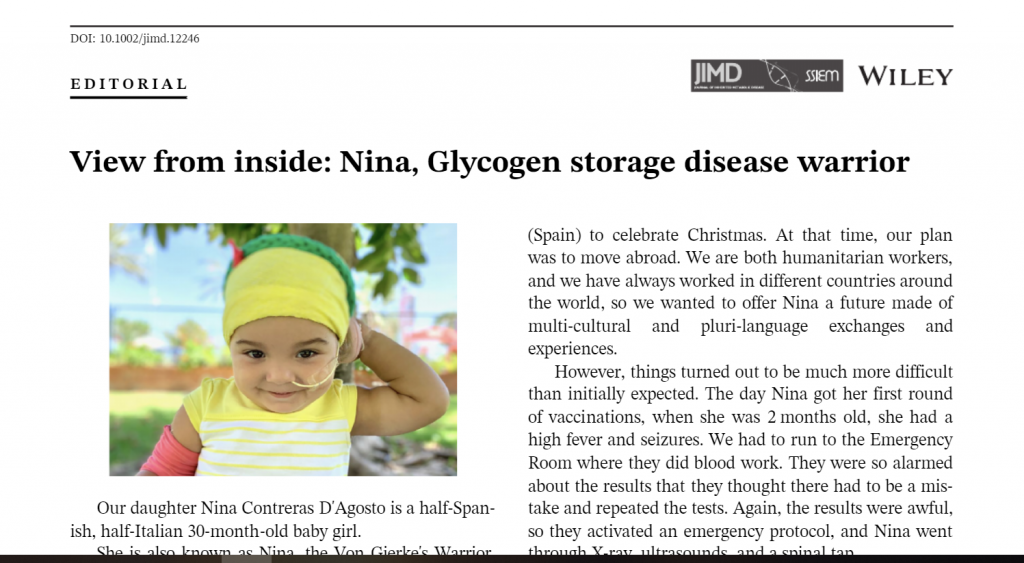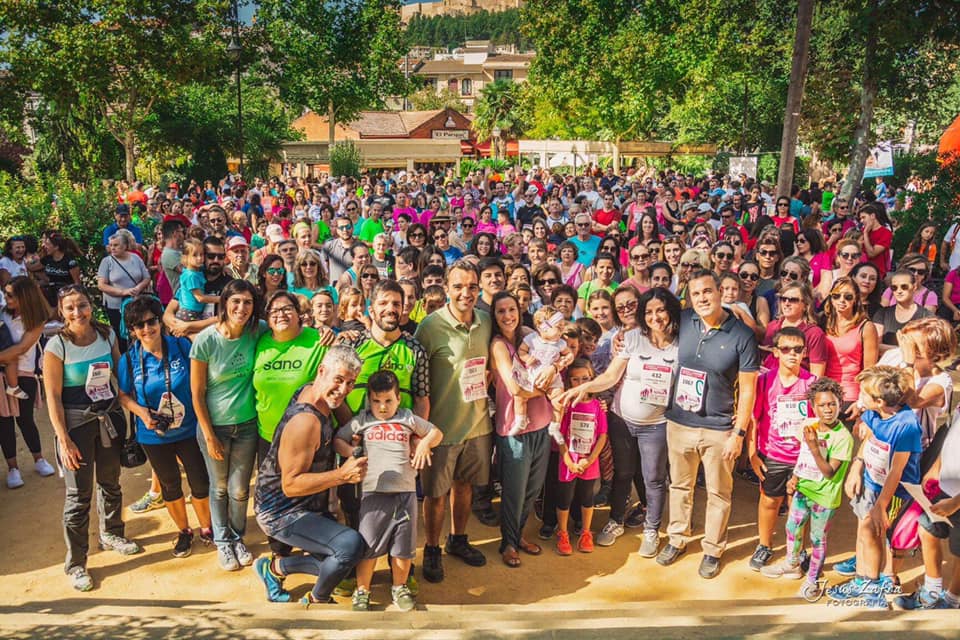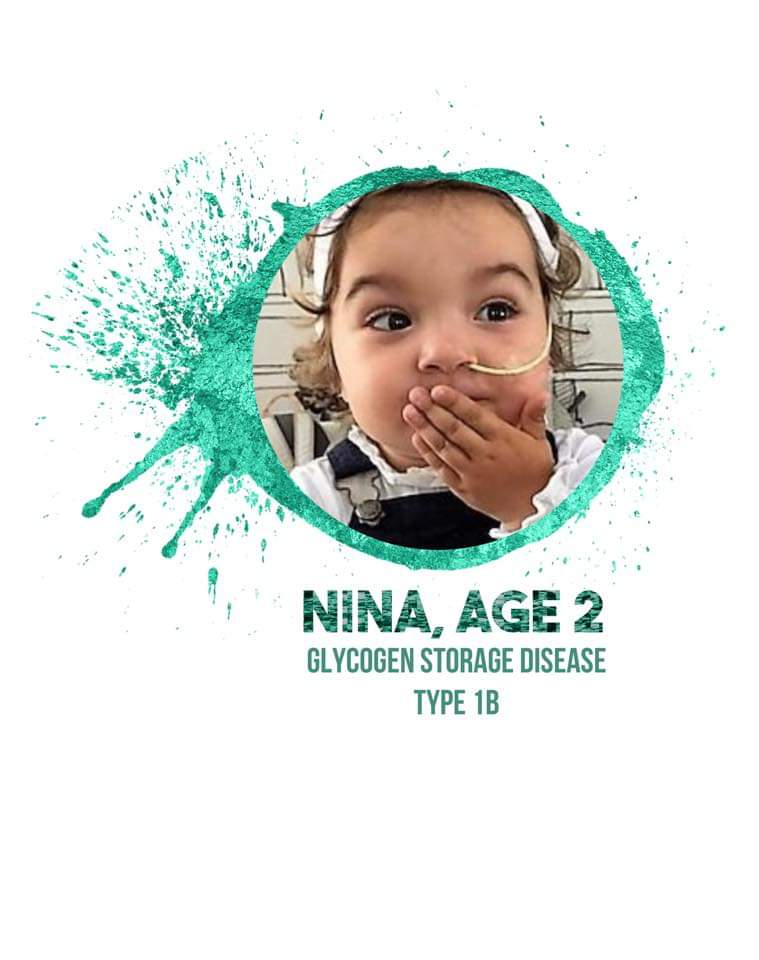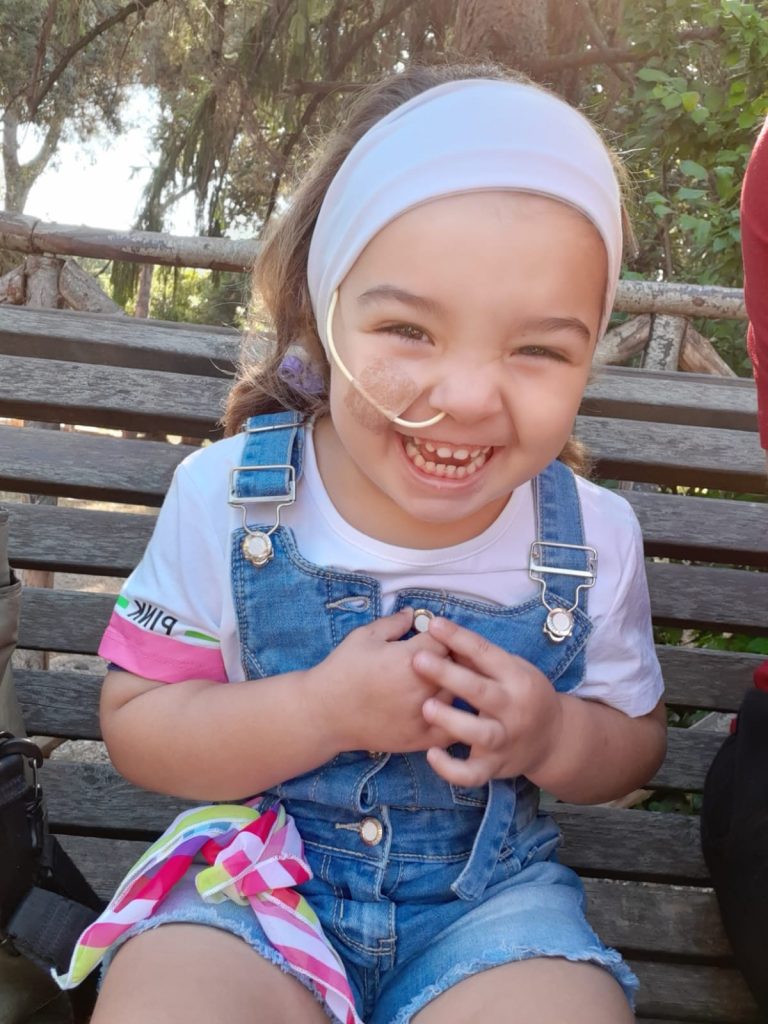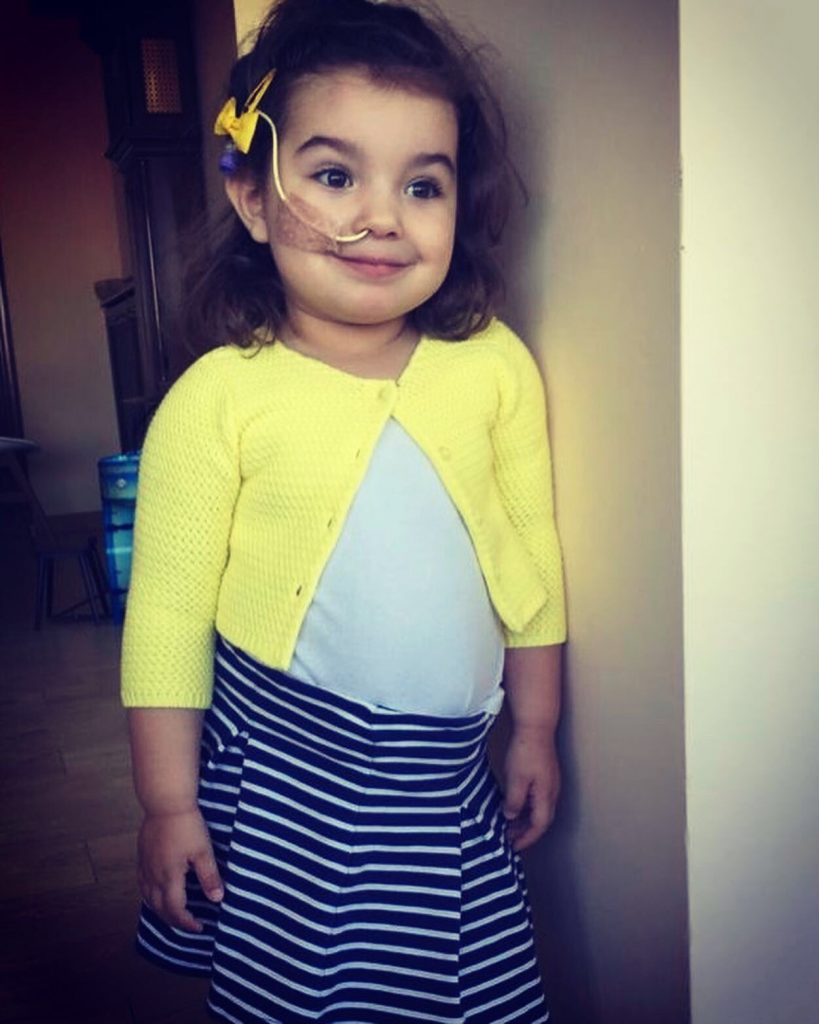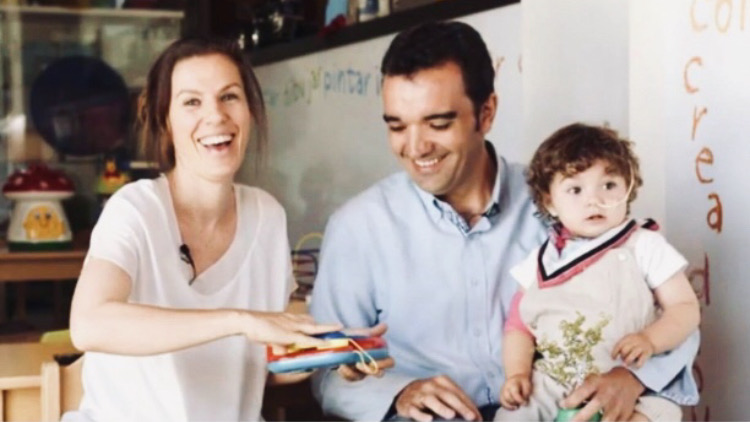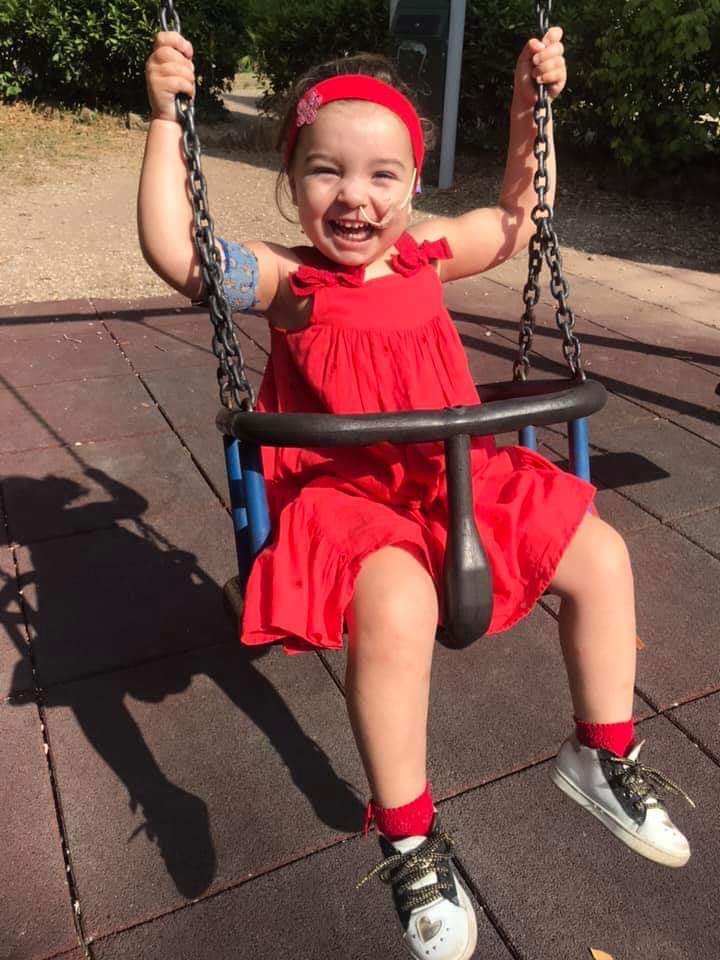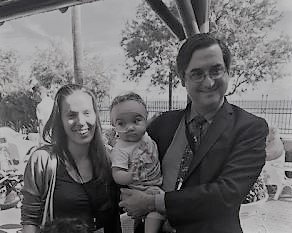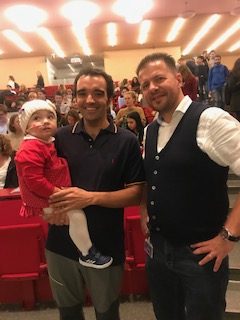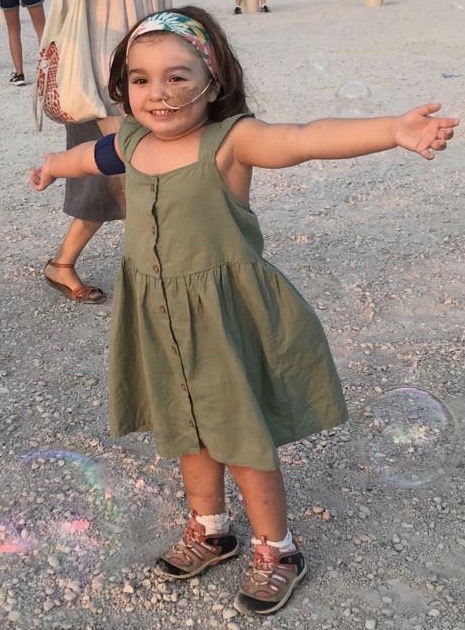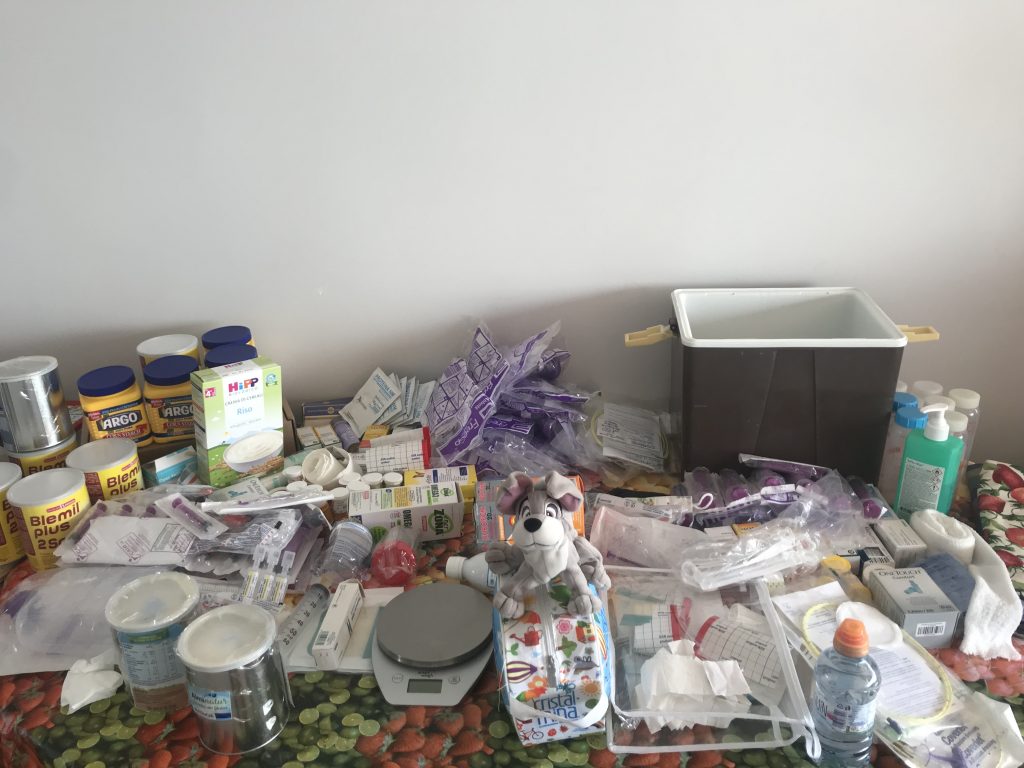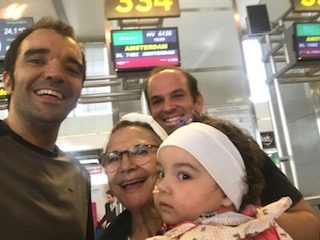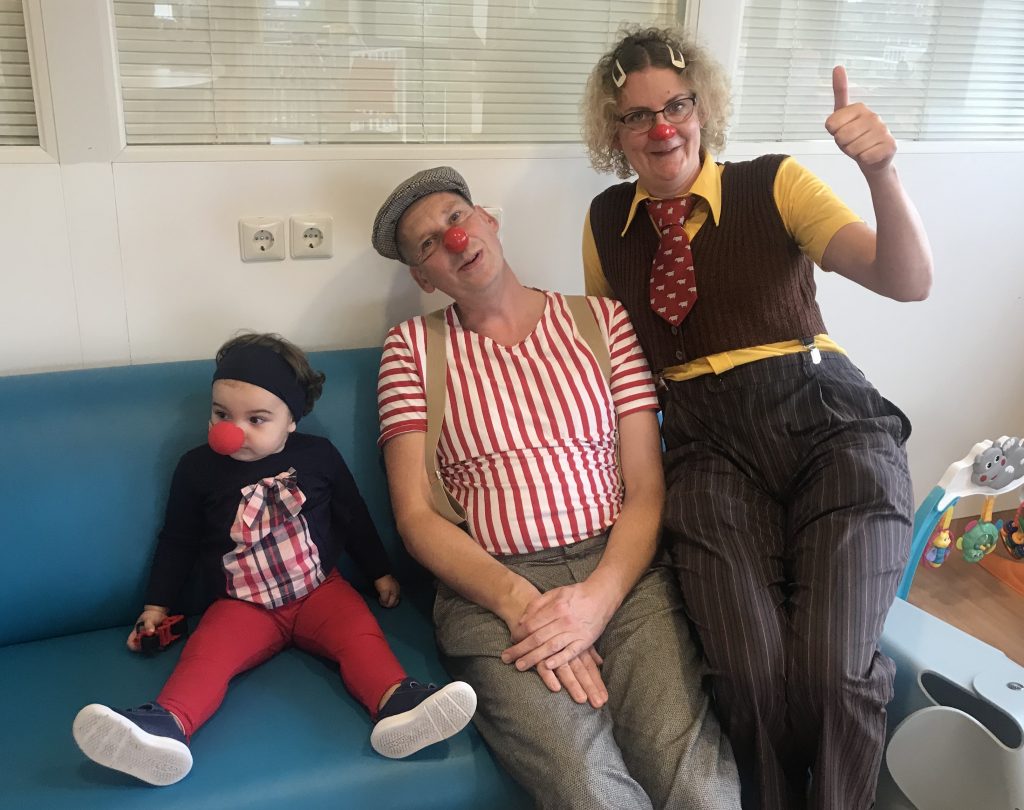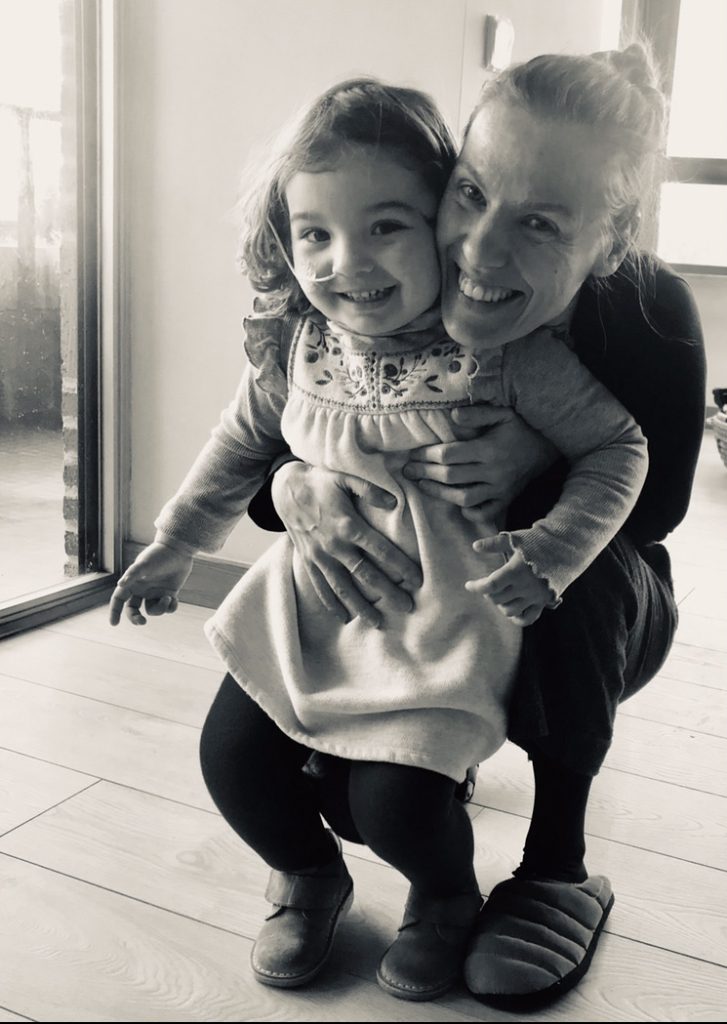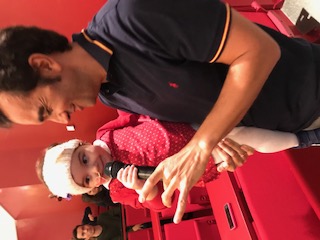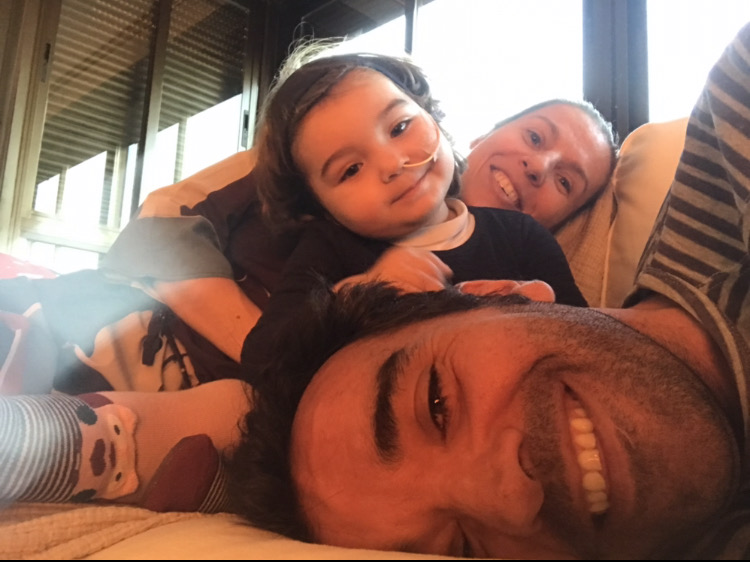This post is also available in:  Español (Spanish)
Español (Spanish) Italiano (Italian)
Italiano (Italian)
Hello Warriors! Ready for a new adventure? Fasten your seatbelts because todays’ story is a very special, intense and also a loooong one… 🙂 I just wanted to be sure I could share everything with you guys and I know you appreciate getting the details.
In my last entry in the blog One day in Nina’s life I told you how my routine was before travelling to the Netherlands and get the off-label treatment with empagliflozin which dramatically improved my life and that of my family.
Since then, we have written an article in the Journal of Inherited Metabolic Disease, we have published a podcast in the University Medical Center of Groningen’s area of research, we have participated as panelists in several webinars, conferences, lectures, together with our dearest Doctor Derks, not only about the off-label treatment with empa but also about the set-up of an internet platform www.emergencyprotocol.net (and its presentation webinar) which generates tailored emergency letters for some metabolic diseases’ patients, including GSD.
Today we are sharing an extended version of the article published in JIMD which offers a more detailed account of everything. Here we go:
Nina, Glycogen Storage Disease Warrior (Extended version)
My name is Nina Contreras D’Agosto. I am a half-Spanish half-Italian two-year old baby girl.
I am also known as Nina, the Von Gierke’s Warrior, and I am unique. Not only because I live with Glycogen Storage Disease (GSD) type 1b – an inherited metabolic condition which affects one out of one million people – but also because in less than two years of life, and despite all my health-related challenges, I have been able to raise an army of thousands of “Warriors In Action” to promote awareness about my disease and to raise funds (around 100.000 USD) to support GSD 1b gene therapy research, through my website www.ninalaguerrera.org and social networks #ninalaguerrera.org
Let me tell you my story:
I was born in Portogruaro a small town near Venice (Italy) and two months later I moved to Alcalá la Real another small town near Granada (Spain) to celebrate Christmas.
At that time, the plan was to move abroad. My parents are both humanitarian workers and they have always worked in different countries around the world. The idea was to continue in the same line taking me with them to their next duty station. A future made of multi-cultural and pluri-language exchanges and experiences was waiting for me.
However, things turned out to be more difficult than initially expected. The day I got the first round of vaccinations according to the Spanish vaccinating calendar, when I was two months old, I had high fever and seizures. We had to run to the Emergency Room in Alcalá la Real, where they did a blood work. They were so alarmed about the results that we were immediately referred to a bigger Hospital in Granada where doctors thought there had to be a mistake and repeated the tests. Again, the results were awful, so they activated an emergency protocol and I went through X-ray, ultrasounds, spinal tap and many other tests, that same night and the following days.
They had no idea what it was. It was clear that I had hepatomegaly since my liver was enlarged, neutropenia given that my neutrophils count was lower than it should be and a very high CRP pointing to a suspected bacterial infection. Other symptoms were lactic acidemia, hyperlipidemia, hyperuricemia and growth retardation. Still, it took three months to get an official diagnose, first it was clinically suspected, and later on confirmed through a genetic test.
It was an extremely hard time for my parents. Having their first and only 2-months old baby girl diagnosed with an ultra-rare, chronic and very serious disease was the worst thing they had ever experienced. All the plans for a bright future abroad were over and a huge battle in the dark against something unknown started. Their lives were changed forever and their whole world crumbled without even time for mourning, a luxury you cannot afford with GSD type 1b. They needed to get hands-on immediately to learn and to provide daily care since an error could be fatal and kill me.
GSD 1b is a very challenging disease. I am not able to convert glycogen into glucose and I can quickly go into severe hypoglycemia (which can lead to coma, brain damage or death) since my only source of glucose is the one that I receive either from food or directly in blood through an IV. My neutrophils count and functionality is lower than it should be so I am prone to recurrent infections and inflammatory bowel disease (IBD, Crohn-like disease) will be developed at some point in my life. Infections such as gastroenteritis and the IBD make GSD 1b patients’ blood sugars very instable, sometimes going down to zero and needing an IV to avoid death. On the top of all that, the lack of proper metabolic control has many other negative consequences.
Despite all these challenges, initially we were told that GSD 1b could be treated in our countries following the existing guidelines. A diet with meals every three hours supported by cornstarch (a slow-absorption carbohydrate which helps having more stable blood sugars during longer periods), daily shots of neupogen to increase the neutrophils count and vitamin E to improve its functionality, pentasa to treat the IBD and a long list of medicines (vitamin D, iron, calcium, probiotics, omega 3, multivitamins…etc) to address the consequences of the lack of proper metabolic control, could be enough to survive and be somehow stable.
However, my case turned out to be a very severe and complex one: I had to be fed every 40 minutes during the day and with continuous feeding during the night. Despite this very demanding feeding schedule, I was often suffering unexplained hypoglycemia. Neupogen and vitamin E did not prevent several serious infections. I had a very important absorption problem and even with strict monitoring, I went through unpredictable emergency situations in which I had seizures, one coma, and needed IVs, spending most of my short life admitted in hospitals.
You would not be surprised if I told you that my parents’ phones alarms used to ring dozens of times during day and night as a reminder of feedings, medicines, shots, supplements…etc. It was also interesting how my parents’ mood could depend on the stability of my blood sugars and on another alarm, the one of the continuous glucose monitoring device (CGMD) which rang when I went down into hypoglycemia. No alarms and no red-colored numbers in the CGMD kept all of us happy. The opposite, honestly, was very stressful; no matter how used we were to it.
If that was not enough, a lot of work had to be done to train me to eat home-made food through mouth so that, at some point, I could get rid of the NG tube and eat solid and regular food. I am still struggling with it but I know at some point I will get there.
Even if it is hard to believe, thanks to my family efforts and my strong and positive spirit, I grew up as a very happy little baby, playing, singing, laughing, and there was never any sign of intellectual growth retardation (actually everybody says I am very smart).
In order to achieve that, I needed at least two people fully dedicated to my care 24/7. My parents were exhausted; not only because of the demanding treatment and the stressing situation but also due to the deprivation of sleep and proper rest at night, while managing my hypoglycemia. They had to request extended unpaid leaves at their jobs to find the time and energy to devour GSD guidelines to know the disease and take care of me.
In the beginning, my mum was taking care of me while my dad was working in Somalia, coming back and forth to Spain very often. After a while, my dad took over, he stayed with me while my mum went to work to Brazil from where she came to The Netherlands to spend a few days with us during my hospital stay there. It was a tough decision to take, not to be altogether all the time during this challenging period. However, my parents wanted to make sure that they both kept their professional links to their organizations so that they can give me all the opportunities I deserve in the future.
This was possible thanks to the support of the extended family. My Spanish Grandma spent with me plenty of time, supporting my parents, and my Grandpa helped very much with logistics and bureaucracy. My Italian Grandparents supported a lot from the distance and never hesitated to take a flight to come and see me or to travel to Udine for paperwork and networking. My aunties and uncles were also very supportive. In the end, even if I have GSD 1b, I have so much love around me that I am a very lucky baby, right?
All this support also allowed my parents to find the time to get in touch with the best GSD experts in the world. First, they got in contact through internet with some families whose kids were also suffering GSD, then they reached the Medical Coordinator of the Spanish Association of GSD patients (AEEG) who supported us in the first stages of the treatment explaining the standard procedures. In the meantime, through these people and through the internet (hospital websites and social networks) they found out and contacted the two best GSD doctors in the world.
I was also very lucky in this regard: can you believe I spent my first birthday with Doctor David Weinstein and the second one with Doctor Terry Derks? Maybe it was pure coincidence but I like seeing it as the best possible presents I could ever have. They are both not only excellent and brilliant professionals but also very beautiful and kind human beings.
Doctor Weinstein was Professor and Director at the GSD Programme in the University of Connecticut and Children’s Medical Center. We started having contact online and then we met in Spain. First, he did not hesitate to come to Granada and see us during several hours of his precious time and then we met in Malaga in the framework of the AEEG GSD Conference. He gave us plenty of very useful advice and he even offered me a huge teddy bear as a present for my first birthday.
A few weeks later, Doctor Weinstein was also very supportive introducing my case to Doctor Terry Derks who also offered me a very nice present for my second birthday: a very nice and colorful ceramic piggy bank with the shape of a dog. I love animals!
Doctor Derks is a pediatrician consultant on metabolic medicine who coordinates the Center of Expertise for liver GSD and works in the University Medical Center in Groningen (UMCG) in The Netherlands. My parents exchanged a couple of emails and after that they had a videoconference with him. They liked very much that Doctor Derks really wanted to talk seeing each other faces, that he was very interested about the human part of the disease and the fact that, once he knew about Nina’s case, he never stopped supporting us until making sure she received a proper treatment.
It was a very good first impression which could not be more accurate. Doctor Derks and his team implement the centrality of the patient approach at its best. My parents were convinced that they had to treat me and they informed us about the European Union Directive 2011/24/EU on patients’ rights in cross-border healthcare.
In parallel, my parents also contacted MetabERN, the European Reference Network for Hereditary Metabolic Disorders established by the European Union to facilitate access to the best available care and address the needs of metabolic diseases’ patients. MetabERN’s Coordinator, Professor Scarpa, another excellent professional, very kind and supportive, understood very well our challenging situation.
Since then, Doctor Derks and his team, MetabERN members led by Professor Scarpa and some members of the Italian Health authorities did their best to get me referred to the UMCG. It was an amazing teamwork and an excellent example of cross-border health care within the European Union. We are extremely thankful to all of them for all the genuine efforts they did to ensure that I could get the best possible treatment.
In a more common disease with a less complex treatment, Doctors in The Netherlands would have coordinated with Doctors in Spain for a joint treatment in my country. However, considering the challenges linked to GSD 1b and the fact that I was about to follow a new, very innovative, experimental and off-label treatment (which, at that stage, was implemented in only few centers) I could only do this safely at UMCG. Actually, I strongly advise not to try this treatment at home and neither to try it without very good experts’ advice and monitoring.
The treatment was based on a recent publication (Veiga-da-Cunha et al –PMID: 30626647). In GSD 1b patients, with G6PC3 or G6PT deficiency, the accumulation of 1,5AG6P inhibits glycolysis, something which affect negatively neutrophils since their energy metabolism depends upon it. Therefore, the research suggests that increasing the renal excretion of 1.5AG could be an alternative or complementary treatment of neutropenia in GSD 1b patients. This renal excretion is facilitated by an existing drug called empagliflozin (“empa” – brand name: Jardiance) which is normally used for diabetes type II and the use for GSD 1b is a very good example of drug repurposing.
Since then, other articles have been published by Doctor Derks and other wonderful Doctors which abstracts you can find through these links: Wartmann et al and Grünert et al
We also had the opportunity to participate with these three outstanding Doctors in this GSD1b webinar.
In the framework of the support we provide to research, we funded the open publication of another article about the efficacy and safety of the empagliflozin treatment based on 112 patients’ experiences. After that, one more article was published further explaining the treatment.
Even a GSD family had the wonderful idea and creativity to make this explanatory video by Kathryn Pierce while Fraser Allan told his story being treated with empa as well.
We have been doing all this so that the treatment is better known and so that all patients can have access to it, always based on evidence and science.
But let’s go back to our adventure:
Before going to The Netherlands Doctor Derks informed us about the treatment, its expected benefits and its relative contraindications. The empa can produce hypoglycemia (which is actually what we wanted to avoid in my case) but we were expecting and hoping that the benefits of getting rid of the 1,5AG would outweigh this risks, so we went for it.
The preparation of the trip was very intense since it meant a huge logistic and bureaucratic effort, quite demanding and sensitive. We had to have with us all the time the medicines, food, supplements, equipments, supplies, by road and by plane, both in the checked-in and hand luggage, respecting the cold chain and, at the same time, controlling Nina’s blood sugars stability.
We travelled with our super cousin Luis, a nurse with a huge heart, in case there would be an emergency, and with Super Grandma Lola, since extra support was needed 🙂
Once at the UMCG, following some blood works to establish a baseline, we started the treatment with empa, taking several measures and controls to ensure safety. For instance, we were measuring the amount of glucose that I was losing through urine to make sure that the levels were safe. We also started with a low dose of empa that we increased little by little and we had a contingency plan in case things would not go as good as expected.
After a few weeks, we could notice that the empa was doing its job. It reduced the amount of 1,5AG and improved my neutrophils count and, more important, their functionality. As a wonderful consequence, my absorption problem started disappearing since my neutrophils were in a better position to fight the potential bacteria in my digestive system. Finally, I was able to tolerate cornstarch something which helped me to have much longer fasting periods.
At that stage, we had different options: to have meals followed by cornstarch during the whole day (approximately 6 to 8 meals in 24 hours) or to have these meals during day time (3 to 4 meals) and continuous feeding during the night. It was also possible to establish a schedule so that these meals were given at specific times everyday or to go for an anticipatory dietary approach and basically feed me whenever my blood sugars were down to around 72 mg/dL or 4 mmol/L.
Today, we are back home and I am doing much better. My blood sugars are more stable, we chose the dietary anticipatory approach and my meals take place every three to four hours (with a little snack in between), my immune system is strengthened, I eat a little bit better by mouth, I have grown up a few centimeters, I have lost some weight (a positive thing considering I had overweight), etc.
Once in a while I still have some difficult days: sometimes, out of the blue, I need more feedings to remain stable and my blood sugars drop faster. There are endless possible reasons behind these episodes: growth spurts, teeth coming out, a virus, a bacteria, an infection, even a nightmare or a “hangover” after a day in which I was really active. It can take us a few days to know what is going on and sometimes we never know what really happened. We just go through it, hoping it will not last long, getting ready for a possible emergency but also trying our best to avoid a hospital stay. In any case, these periods are also much less challenging than they used to be before the new treatment when I had to be fed every forty minutes.
GSD 1b remains a very challenging disease but, at least, we have improved a lot our situation. Hopefully, as I grow up things will get even easier and maybe after some years I will be in a position to receive the gene therapy which research we are supporting.
Looking at the bright side, I must say that this disease has given me the chance to meet a lot of wonderful people and to have a beautiful experience at UMCG where we felt welcomed, understood and listened to. The medical team came visit us everyday, we had several meetings with them, our opinion was not only appreciated but also integrated as part of the way forward. As an illustrative example, there was a very interesting multidisciplinary meeting to which my father was invited where doctors, dieticians, nurses, a psychologist, pedagogic employees and a speech therapist participated, giving us an excellent opportunity to continue learning and feeling reassured.
During my hospital stay not only my health dramatically improved, but I also had the chance to celebrate my second birthday with the outstanding hospital team, I learned some Dutch words and I met other GSD 1b patients and families.
On the top of that, I participated together with Doctor Derks in a lecture for first-year medical students called “an interview with the patient” which was an amazing experience. Students had to find out my disease by asking us questions so we had the chance to share a lot of things with them, not only medical but also personal. We were given the opportunity to provide a piece of advice and we humbly suggested that they should always give utmost importance to the human part of the patients’ stories.
Again, for all this, I feel lucky, despite all the challenges. During my hospital stay I had time to reflect and sometimes I wondered: what will happen with those GSD1b patients whose parents do not speak languages, cannot establish networks or do not have the time and resources that my parents had to find the support to take me to UMCG?
I would love that other GSD1b patients with similar challenges could get lucky as well and have access to the best possible health care for their respective cases. At this stage, it is challenging and it takes time to implement the new treatment and to build the scientific evidence before it gets available to most patients but we will hopefully get there as soon as possible and we will try to start supporting initiatives in this sense through www.ninalaguerrera.org Please do not hesitate to visit our website and social networks if you wish to collaborate.
We have always believed in research and science and we think that our story is a good example of how an amazing team of researchers together with an awesome medical team can dramatically improve the life of many people.
To conclude I would like to say that we have no words to express our endless gratitude to every person and institution implied along this process. As my parents would put it: “We can just affirm that thanks to them we are finally able to enjoy our daughter as a family and we have gone from feeling like Nina’s caregivers to truly becoming Nina’s parents”.
Plenty of Nina Hugs!
